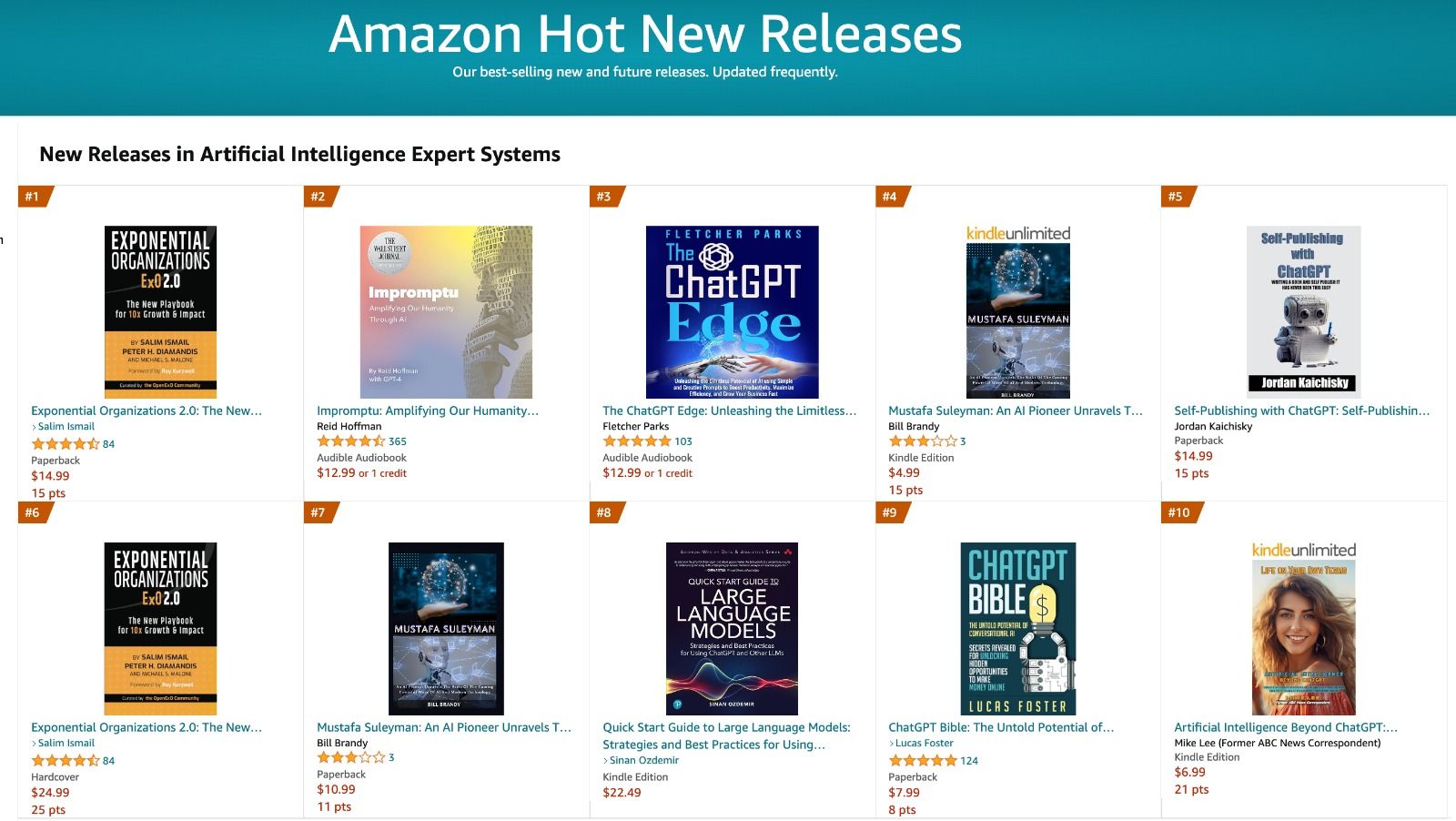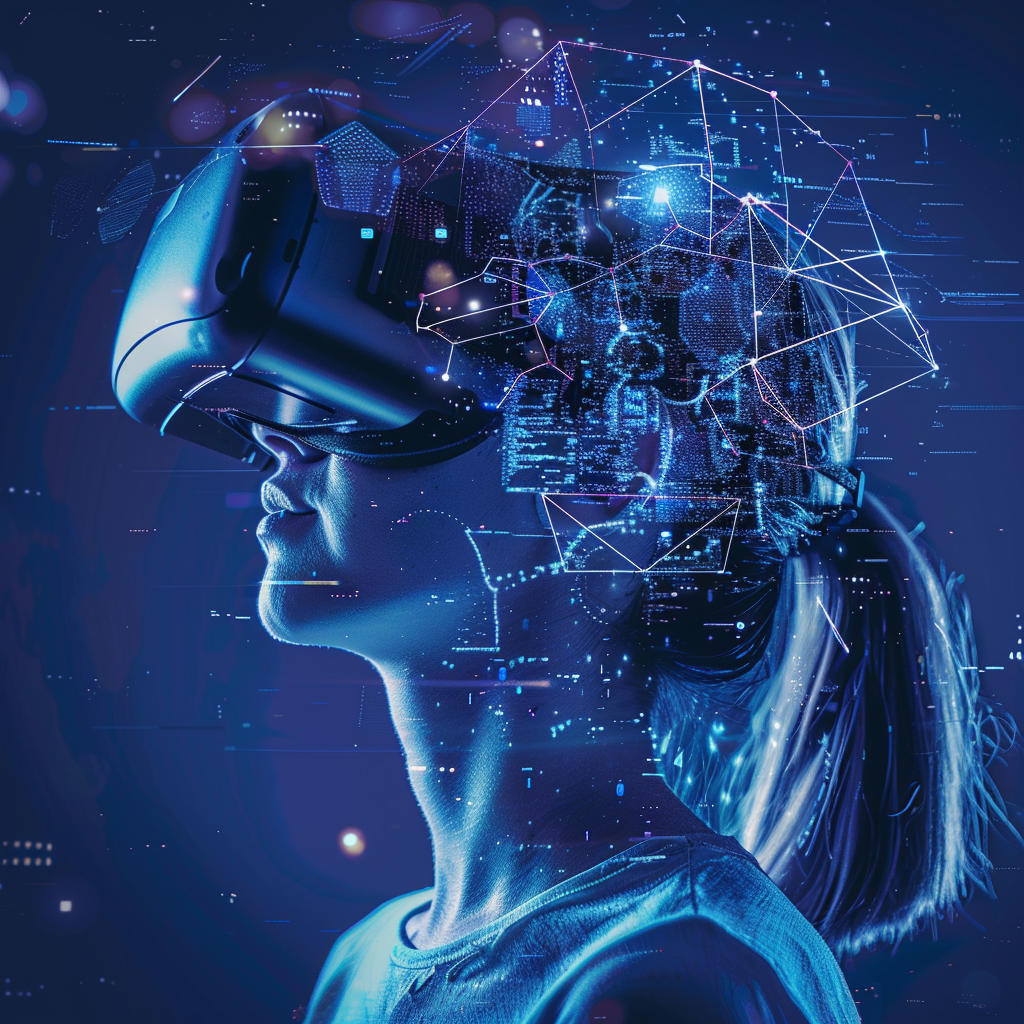
Artificial Intelligence and Human Interaction in the Innovation Space
In the realm of innovation, AI's presence has ushered in a new era of interactions, raising questions about its role in innovation teams. We'll explore nuances of human-AI collaboration, differentiating between human and AI cognition, and explore the emotional undercurrents in decision-making.
The presence of AI in the innovation arena has ushered in a new era of interactions, both among humans and between AI systems themselves. But what does it mean when we claim AI is a member of the innovation team? Is it a seamless integration, or is it a more nuanced collaboration? How does human creativity mesh with AI capabilities, and how will these dual forces sculpt the innovation and decision-making landscape?
In this article, we'll delve into the nuances of human-AI interactions, aim to differentiate between human and AI cognition, and probe the emotional undercurrents steering decision-making. We'll also contemplate if LLMs, boasting an extensive reservoir of human knowledge, can genuinely mirror our humanity.
The Innovation Process & Team Dynamics
At its core, innovation involves breathing life into something novel by revamping or modifying what already exists.
While myriad models are available, the overarching innovation process encapsulates identifying obstacles, ideating solutions, appraising ideas, and then actualizing them.
The ideal makeup of high-performing innovation and decision-making teams usually consists of 2 to 10 members, with a sweet spot of around five decision-makers. Such teams are agile, capable of ideating, experimenting, and pivoting swiftly. Yet, as new members integrate, they introduce diverse backgrounds and histories. These may span varying sectors, specialties, organizational and cultural experiences, educational backgrounds, and organizational roles—from frontline employees to executives. The insights gleaned from solo consulting roles, local businesses, or behemoths like Apple differ drastically.
These varied characteristics shape individual values and viewpoints concerning problems or solutions. It's here that sensemaking enters the innovation equation. Defining a problem and its remedy is arduous as an individual. But as teams grow, so does this challenge. Team members need to engage in sensemaking to achieve consensus, while maintaining a conducive environment for constructive critiques.
Braineet offers an intriguing compilation of 35 well-known innovation missteps, providing a vivid illustration of the complexities involved in the decision-making that led to such failures. Among the notable flops on this list, Colgate Pizza and Evian's Water Bra particularly caught my attention. Colgate erroneously banked on the strength of its brand name, while Evian aimed to pioneer a novel crossover product. Unfortunately, both companies fell short in grasping the nuances of their target markets. One can easily envision internal discussions tainted by existing power hierarchies, insufficient psychological safety, and imbalances in influence among various functional groups, contributing to these misguided ventures.
In the subsequent segment, we’ll dissect thinking styles that potentially swayed these innovation misfires.
How Our Thinking Styles Influence Innovation
Johann Harnoss and Justin Harnoss penned an insightful article on the influence of our thinking styles on innovation. In their article, linked here, they describe three types of thought styles. Type I thinkers champion expertise, objective truths, logic, and data—domains frequented by scientists. Type II thinkers are the trailblazers who prototype, test, and iterate, characteristic of Silicon Valley pioneers. Lastly, Type III thinkers are social science aficionados, delving deep into human behavior within societal constructs.
For innovation, sticking solely to one approach hinders comprehensive sensemaking. Collaborators need a holistic understanding of diverse thinking styles and perspectives—remember the Colgate Pizza and Evian Water Bra debacles?
While many might not consciously consider these dynamics, this awareness can elevate sensemaking during innovative endeavors. Coupled with active inquiry, this fosters a rich exchange of ideas and insights.
Before delving into AI, acknowledge the invaluable human context—our cultures, values, experiences, and thought processes. This human touch empowers us to facilitate sensemaking, crucial for innovation.
According to Riva and Galimberti, communication transcends mere data relay—it's a two-way street, demanding mutual accountability. True communication necessitates feedback loops, ensuring the message sent resonates with the recipient. This iterative exchange forges a shared understanding and shapes a collective intelligence framework.
In this intertwined web of collective intellect, where does AI slot in?
Emergence of AI in Decision-Making
Recently, a fresh player has been introduced to the innovation and decision-making landscape: Artificial Intelligence. In its earlier iteration, AI would code and categorize data, proceeding to run specific calculations to yield the desired outcome. Such operations were constrained by the computing power at hand.
The AI variant we currently deploy, exemplified by tools such as ChatGPT, is termed "Generative AI". This AI form is educated on billions of words, with the capability to predict the subsequent word in a sequence, thus termed a Large Language Model (LLM)
Understanding AI Interactions
When a chatbot, like ChatGPT linked to an LLM, constructs a paragraph, it essentially operates as an advanced "Autocomplete" function. Viewing LLMs in this light, it's plausible they might sometimes produce unexpected results.
With the integration of AI, we now witness human-human interactions cultivating mutual understanding and meaning, and human-AI interactions aiming to develop a semblance of the same.
With humans, the intent is always to comprehend and construct meaning. In contrast, with AI, it's akin to an advanced game of fill-in-the-blank. There's no genuine comprehension involved. If the outcome aligns with our expectations, we deem the "interaction" – a prompt followed by an anticipated response – successful.
Distinguishing Human and AI Cognition
Humans express ideas, interpret shared thoughts, introduce new concepts, and collectively enhance comprehension. Our innate capacity to pose questions influenced by cultural nuances, values, and desires, and then assimilate this information in novel ways, forms the crux of creativity and innovation.
AI can mimic the process of posing questions based on its training, but it doesn't seek understanding per se. This might clarify recent oddities, such as when the Bing AI provided offbeat suggestions to users intentionally pushing its limits.
While human-AI collaboration can be profoundly creative and innovative, standalone AI, in its current form, has limitations. Humans remain the ones to discern challenges specific to their cultural or global context. Though AI can provide probability-driven advice, the onus of the ultimate decision lies with humans. The responsibility to chart a course is inherently human.
Emotion & Decision-Making
Human decisions aren't strictly logical. Pure logic might suggest discontinuing life support for terminally ill elderly individuals. They might have a limited life span, consume resources, and endure pain. However, emotions heavily influence our choices. The emotional connection compels us to wish for our dear ones to remain with us for as long as possible.
LLMs: A Reflection of Humanity?
LLMs are not mere computational entities. They've been trained on a myriad of human tales, scientific discoveries, and experiences documented online over the past decades. GPT-4, for instance, was trained on over 570 GB of data sets. They might echo our sentiments and empathy, but this is more of a mimicry than a genuine sentiment.
How to Engage with Artificial Intelligence
Where we are today, it likely makes sense to think of artificial intelligence as a Type 1 thinker. It’s focused on a type of truth, expertise and data. Type II thinking, with respect to iterating and evolving ideas can occur with human prompting and Type III thinking is less likely until artificial intelligence develops an ability to engage with humans without prompting. As things are going it seems like that’s entirely possible but not entirely probable.
Concluding Thoughts
While AI can assist in idea generation, evaluation, criteria identification, statistical analyses, and online searches (even crafting eloquent prose), humans retain their roles as creators, innovators, and decision-makers. We remain central in creating meaning, brainstorming collectively, and devising insightful prompts to direct AI's capabilities.
Our role will be to consistently generate ideas and foster mutual understanding among humans, while utilizing artificial intelligence to complete gaps in information.
What are your thoughts on the roles of AIs and humans interacting in innovative teams?
References
Frome, Nis. 2019. “This is the perfect team size for innovation according to 300+ decision-makers.” Medium. https://medium.com/agileinsider/this-is-the-perfect-team-size-for-innovation-according-to-300-decision-makers-a0a6eed745a0.
Giuseppe, Riva, and Carlo Galimberti. 1997. “The psychology of cyberspace: A socio-cognitive framework to computer-mediated communication.” Academia.edu. https://www.academia.edu/6409492/The_psychology_of_cyberspace_A_socio_cognitive_framework_to_computer_mediated_communication.
Gratas, Brenda. 2023. “50 ChatGPT Statistics and Facts You Need to Know.” InvGate. https://blog.invgate.com/chatgpt-statistics.
Harnoss, Johann, and Justin Harnoss. 2017. “Sensemaking and innovation. A primer. | by JJ_Harnoss.” Medium. https://medium.com/@JJ_Harnoss/sense-making-and-innovating-a-primer-fc2061a0b384.
Livescault, Jonathan. n.d. “35 Famous Innovation Failures - and What You Can Learn From Them.” Braineet. Accessed September 22, 2023. https://www.braineet.com/blog/innovation-failures.
Stanford Online. 2022. “.Andrew Ng: Opportunities in AI - 2023.” . YouTube. https://youtu.be/5p248yoa3oE?feature=shared.
#AIInnovation #HumanAIInteraction #InnovationDynamics #AIandDecisionMaking #TechInnovation #CreativityInnovation #AIandHumanCognition #EmotionInnovation #CollectiveIntellect #AIinInnovationTeams #HumanAIInnovation #AIReflection #EngagingAI

Be sure to grab your copy of Exponential Organizations 2.0: The New Playbook for 10x Growth and Impact today! 🚀 Discover groundbreaking strategies for achieving 10x growth and making a lasting impact on your industry.
ExO Insight Newsletter
Join the newsletter to receive the latest updates in your inbox.









